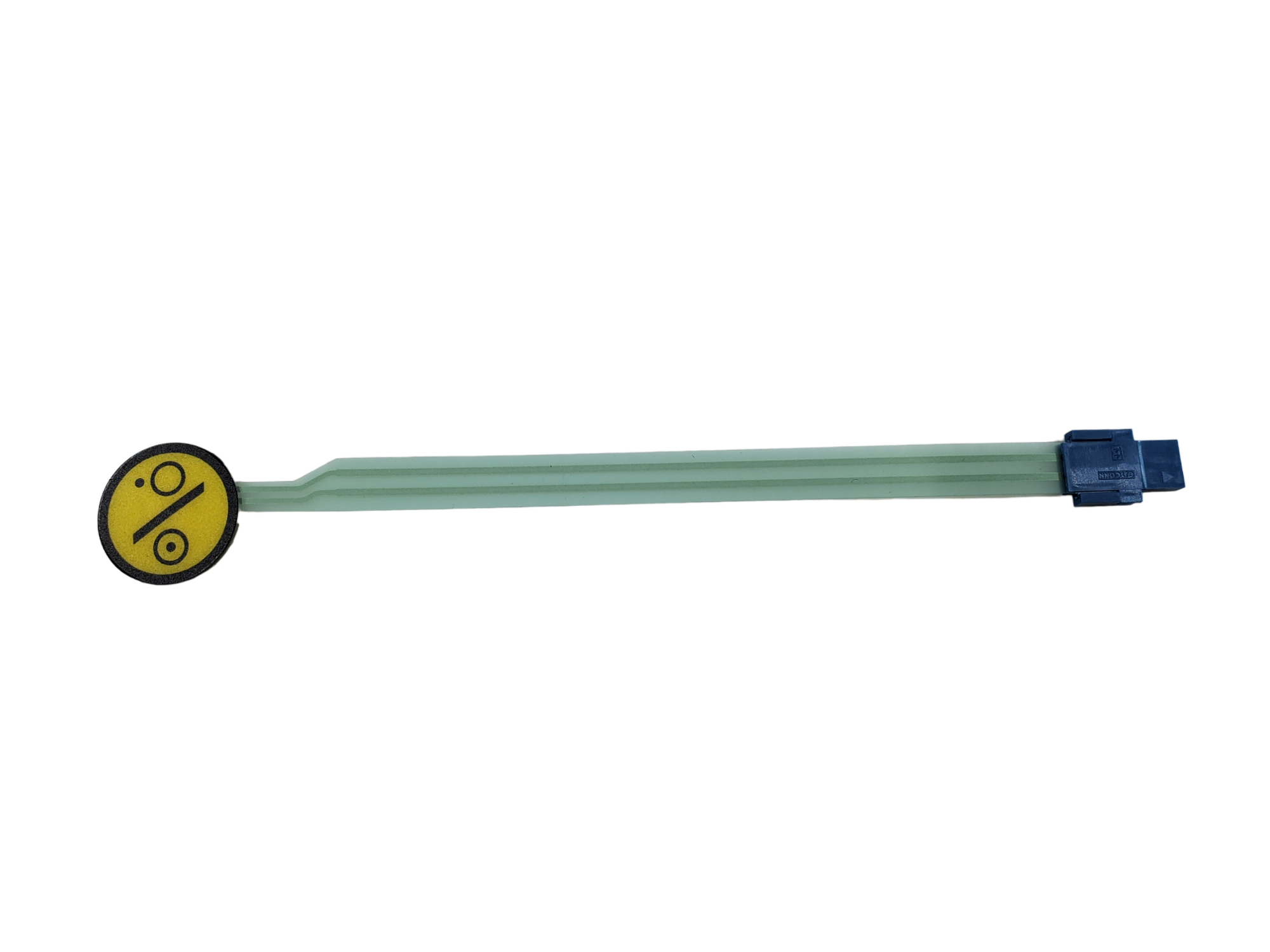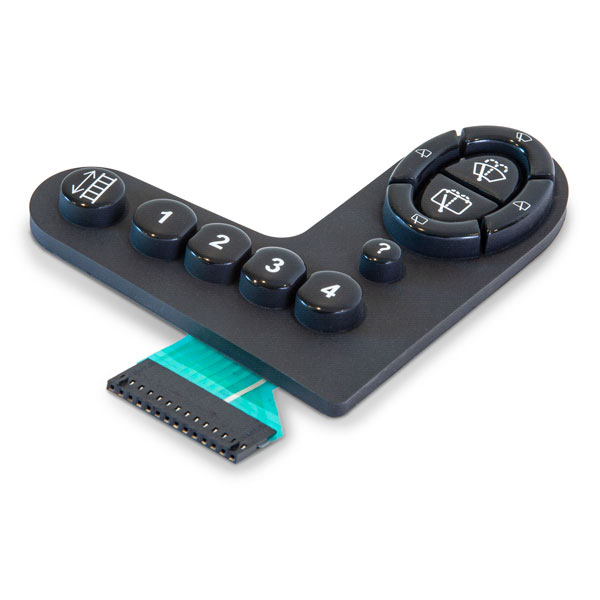Membrane Switch: Reliable, Cost-Effective, and User-Friendly Control Systems
Membrane Switch: Reliable, Cost-Effective, and User-Friendly Control Systems
Blog Article
Comprehending Membrane Switches: The Key to Durable and Trustworthy Controls

What Are Membrane Switches?
Membrane layer switches are an advanced option in the realm of interface modern technology, integrating capability and style flawlessly. These devices work as an interface in between customers and electronic systems, integrating several elements right into a compact layout. Normally built from adaptable, thin layers of products, membrane layer buttons are designed to react to touch, making it possible for individuals to connect with equipment and electronic devices successfully.
The primary aspects of a membrane layer switch consist of a published circuit layer, graphic overlay, and a spacer layer that prevents unplanned activation. The visuals overlay can be personalized to mirror brand name identification or individual preferences, enhancing aesthetics while guaranteeing use. Membrane buttons are generally utilized in numerous applications, including clinical devices, customer electronics, and industrial equipment, owing to their resilience and resistance to environmental aspects such as wetness and dust.
Among the crucial benefits of membrane switches is their capacity to hold up against deterioration, making them perfect for high-traffic environments. Furthermore, they are light-weight and require very little space, permitting for cutting-edge styles in product advancement. On the whole, membrane layer changes stand for a practical and efficient selection for modern-day digital user interfaces, weding innovation with user-centric layout concepts.
Exactly How Membrane Layer Switches Job
The procedure of membrane layer switches over hinges on a straightforward yet efficient system that converts customer input into digital signals. These switches are composed of numerous layers, generally consisting of a visuals overlay, a spacer layer, and a circuit layer. When a customer presses the button, the top layer flaws, enabling a conductive component in the circuit layer to make call with an equivalent conductive pad on the underside of the visuals overlay. This contact closes the circuit and sends a digital signal to the gadget, suggesting that the switch has actually been triggered.
The layout of membrane layer switches can vary, yet they often integrate domes or tactile components to give feedback to the user, improving the general experience - membrane switch. The materials made use of in membrane layer switches, such as polyester or polycarbonate, add to their resilience and resistance to environmental aspects, including moisture and dust. The printed circuits are normally encapsulated, which shields this link them from wear and tear over time.
Advantages of Membrane Layer Buttons

In addition, membrane switches are known for their resilience. Built from durable materials, they are immune to dust, dampness, and physical wear, which substantially extends their life-span contrasted to typical mechanical switches. This toughness makes them specifically appropriate for high-traffic environments and applications requiring durability.
An additional considerable advantage is the convenience of cleaning learn this here now and maintenance. The smooth surface of membrane switches reduces dirt build-up and is frequently resistant to spills, making them ideal for settings that require frequent sanitization.
Furthermore, membrane layer switches use a streamlined profile, bring about a thinner style that can be integrated into numerous tools without adding mass. This feature not just enhances the aesthetic allure but also contributes to an extra ergonomic item style.
Applications of Membrane Layer Buttons
Versatile and user-friendly, membrane buttons discover applications throughout a variety of sectors, consisting of clinical gadgets, customer electronics, and industrial devices. In the medical field, these switches are essential to devices such as analysis equipment, patient tracking systems, and mixture pumps, where reliability and ease of cleaning are essential. Their capability to keep and stand up to harsh environments functionality makes them suitable for such applications.

In customer electronic devices, membrane layer buttons are used in products like microwaves, washing devices, and remote controls - membrane switch. Their streamlined layout enables instinctive interface, boosting the overall individual experience while providing sturdiness and resistance to damage
Commercial equipment additionally gains from membrane layer buttons, particularly in control panels for equipment and automation systems. These switches use defense against dust and wetness, ensuring consistent efficiency in tough environments. Their personalized functions allow makers to customize them to specific operational demands, enhancing effectiveness and performance.
Picking the Right Membrane Switch Over
When picking a membrane layer button, it is vital to take into consideration various variables that influence efficiency and viability for particular applications. The key considerations consist of environmental conditions, tactile feedback, durability, and style specifications.
First, analyze the operating environment; buttons subjected to moisture, chemicals, or extreme temperature levels require specific products to guarantee durability and functionality. Next, examine the need for tactile comments. Depending on customer communication, some applications may benefit from a responsive action to validate activation, while others may favor a non-tactile layout for visual factors.
Durability is another essential factor; membrane switches must be designed to withstand constant usage, impacts, and abrasion. Guarantee the chosen switch can sustain the expected lifecycle, particularly in high-usage circumstances.

Conclusion
Finally, membrane layer switches over act as important components in the layout of reputable and sturdy control article source systems throughout numerous industries. Their small style, incorporated with robust building and customizable features, enhances customer communication while making sure durability popular atmospheres. The flexibility of membrane layer switches over permits for customized options that satisfy details operational demands, enhancing their value in modern innovation. As industries continue to progress, the importance of incorporating effective membrane layer button remedies can not be overstated.
Membrane switches over stand for an important facet of contemporary user interface design, blending performance with durability in various applications.Membrane switches are an innovative service in the world of individual interface technology, integrating functionality and design perfectly. Generally constructed from adaptable, slim layers of products, membrane switches are created to respond to touch, enabling users to communicate with machinery and digital devices effectively.
The style of membrane layer switches can vary, yet they frequently integrate domes or tactile components to give responses to the user, improving the overall experience.In verdict, membrane changes serve as vital components in the style of durable and dependable control systems across various industries.
Report this page